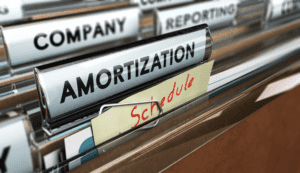
An accurate sales forecast helps businesses maintain consistent product and service pricing. A poor sales forecast might mean a business is forced to adjust its pricing unpredictably. This tactic is often the result of panic; without the proper strategy, it jeopardizes a business’s profitability. But new businesses that don’t have a baseline will find it impossible to forecast sales that way. You’ll look back at your conversion rate data and then uncover how likely a customer is to purchase at each stage of your sales process. Of course, if the global pandemic has taught us anything, it’s that you can’t always predict the future.
What a business needs to prepare for accurate sales forecasting
You can employ this method to forecast units and then factor them by average prices to arrive at revenue. If you sell a subscription service, you can calculate recurring revenue for each product type. As the quarter or period progresses, you revise the forecast based on updated information. This method can quickly get cumbersome and time consuming without an analytics solution. Sales managers, who are usually responsible for forecasting, spend a lot of time factoring in these nuances and other market factors when calculating forecasts.
- The sales forecast is one of the major planning premises in business organizations.
- For example, if your sales forecast tells you that your custom pottery shop will hit a slow period after the festive season, you might want to cut back on some nonessential expenses.
- Most businesses use a sales pipeline divided into a series of sections.
- Of course, enterprise-level organizations require a more intricate approach that takes into account other market complexities.
- But in large enterprises, the tools used to foresee sales remain only somewhat more reliable than an arthritic knee.
- As a science experiment becomes more trustworthy with more trials, you should improve the accuracy of your sales forecast by using several different methods to estimate future sales.
- With this method, the biases of individual reps are less of a factor than with the deal stage model.
Historical data
If you’re just getting started with sales forecasting and have busy sales pipelines, opportunity stage forecasting, length of sales cycle forecasting. The opportunity stage sales forecasting method accounts for the various stages of the sales process each deal is inThe further along in the pipeline, the likelier a deal is to close. Businesses analyze previous https://www.bookstime.com/ results to extrapolate and create predictions. If a business starts out and lacks a good body of historical sales data, it will struggle to create an accurate sales forecast. A sales forecast is an estimate of what your business’s future sales will be. You’ll use historical sales data or other methods to make educated guesses about your future sales revenue.
What is sales forecasting: Definition, methods, best practices

Economic uncertainty, inflation, and looming recessions can all influence the way people shop and spend their money. You should have a general understanding of how the economy might impact sales and plan for any adjustments. Implementing sales commission changes, or any policy changes at your company, can impact sales. Expect a shift in sales as employees adjust to new policies, whether that’s around compensation, promotions, or operations. If you’ve launched a new product or feature within the calendar year, that impact won’t show up in last year’s data, so you may have to adjust accordingly. After you have quantified these factors, include them in your forecast.
- This gives businesses a better understanding of how they can use that capital and makes it possible to calculate what profit they can expect over a given period of time.
- Now that you have a better handle on what’s possible for your business, it’s important that you set a benchmark for success.
- The CFO and financial team use sales forecasts to determine how much cash will be coming into a company.
- For example, the finance department uses sales forecasts to decide how to make annual and quarterly investments.
- Intuitive forecasting requires sales reps to estimate the likelihood of the opportunities in their pipeline closing and the value of those deals.
- AmoCRM is an easy and smart sales solution that focuses on the world of messenger-based sales.
Discover why over 90% of Fortune 100 companies trust Smartsheet to get work done.
For example, the finance department uses sales forecasts to decide how to make annual and quarterly investments. And the HR department uses forecasts to align recruiting needs to where the business is going. If your sales team isn‘t consistently using the same stages and steps, you won’t be able to predict the likelihood of an opportunity closing. Reference our guide to building a sales process to learn how to create a documented, structured sales process to use when converting any prospect from a lead to a customer. Managers use reps’ sales forecasts to estimate the business their team will close.
Demand Forecasting vs. Sales Forecasting — The Complete Guide

A comparison could be drawn with times past, when farmers depended on signals like cats washing behind their ears or the ache in an old-timer’s knee to forecast the weather. With the advent sales forecasting definition of supercomputers, weather prediction has vastly improved. But in large enterprises, the tools used to foresee sales remain only somewhat more reliable than an arthritic knee.

But, when they spend more than 20 percent of their time on forecasting, the win rate declined by more than two percentage points. Ideally, you can quickly build a highly reliable sales forecast with simple, economical methods. The ultimate forecast method would automatically (i.e., without manual intervention) fetch the relevant data and make predictions using an algorithm finely tuned to your business. By incorporating state-of-the-art tools into an integrated approach for data analysis, organizations can transform sales forecasting into a strategic advantage.
Before you can make any estimates, you’ll need to have a solid, repeatable, and standardized sales process. After all, if each sale is completed using a different or non-standardized sales process, you can’t make any sort of predictions based on previous sales. Now that you know what your options are, all that’s left is to make your sales forecast. To that end, here’s a handy sales forecasting guide that walks you through all seven steps of the process. For example, if your average sales cycle length for closed sales was 30 days, you would say that a lead that has been in your funnel for 15 days has a 50% chance of closing. Bottom-up sales forecasting can also be called “intuitive forecasting,” as it relies on each salesperson’s intuition and judgment to create a total sales amount.
Everything needs to be logged correctly in the CRM so you can see the kind of lead it is, and how long it’s been in the system. If you don’t have a CRM that records all of that quickly and easily, it can require your reps to enter a lot of data. Without a clearly documented sales process describing the actions and steps it takes to close a deal, you’ll have difficulty predicting whether any single deal will close.